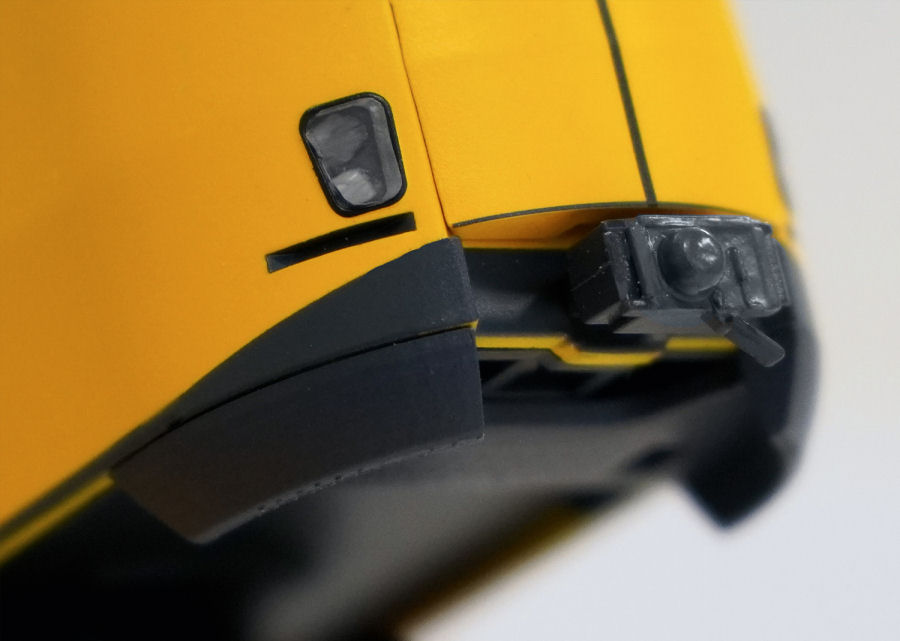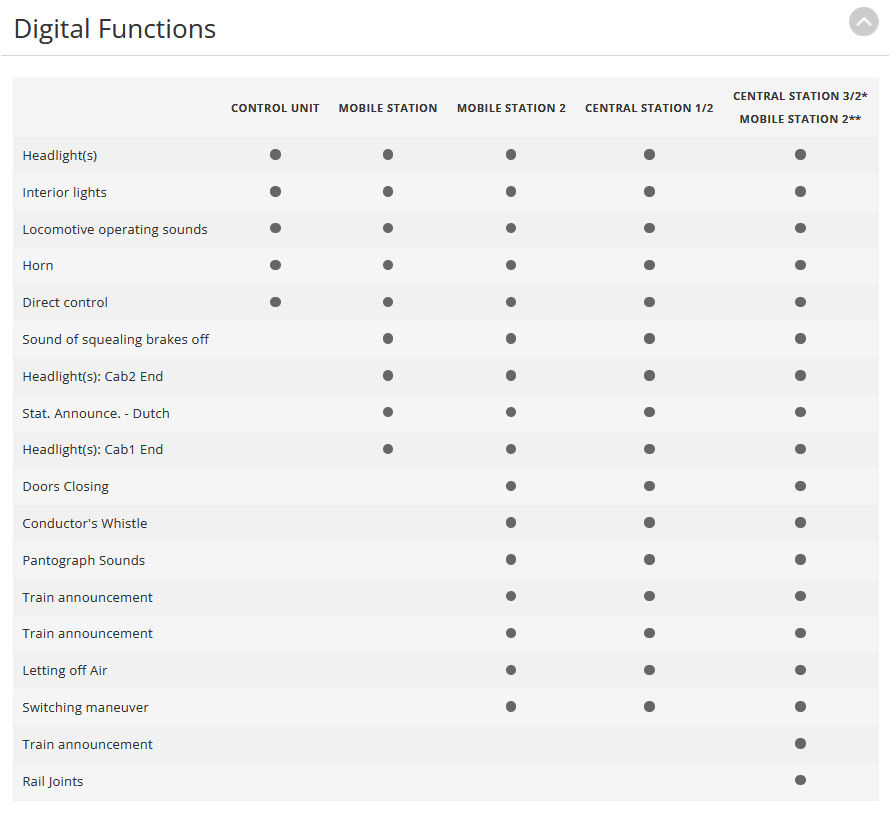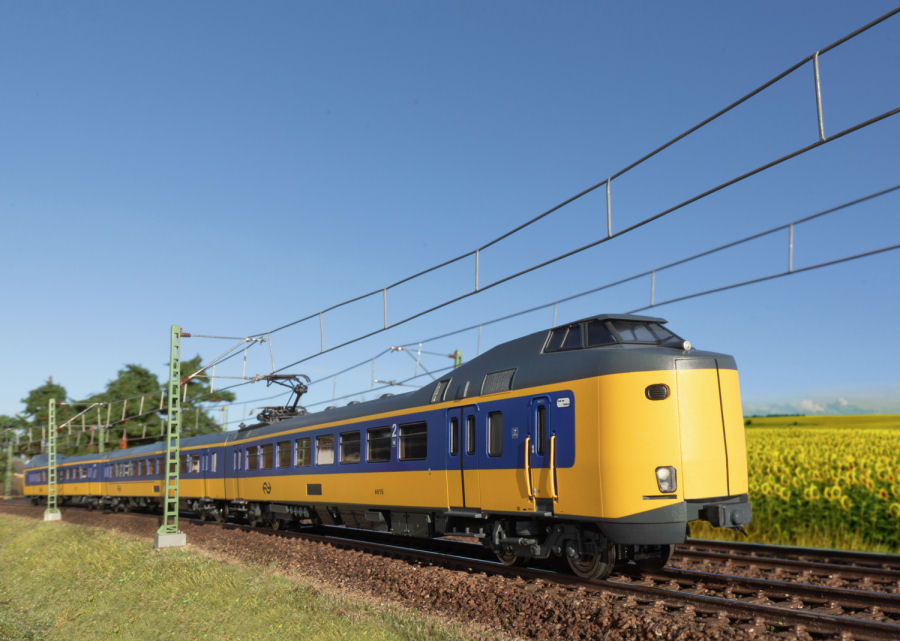- Factory-installed LED interior lighting.
- Various Dutch station and train announcements included.
- World of Operation mfx+ digital decoder and extensive operation and sound functions included.
- Train destination signs: Hoek van Holland.

Model: The train has an mfx+ digital decoder and extensive sound functions. It comes in a three-part version. The powered end car has a die-cast frame. The train has controlled, high-efficiency propulsion with a flywheel. 2 axles in one truck powered. Traction tires. The engineer's cabs in both end cars have interior details. The train has power pickup in the end car at the front of the train; the power pickup changes with the direction of the train. It also has special close couplers with a guide mechanism. The train has factory-installed interior lighting. The interior details vary with the type of car. The triple headlights, dual red marker lights, and the interior lighting will work in conventional operation and can be controlled digitally. The headlights at car ends 2 and 1 can be turned off separately in digital operation. Light yellow and red LEDs are used for the headlights and marker lights. Warm white LEDs are used for the interior lighting. The construction of the running gear and the bodies is detailed. There is a representation of the "Scharfenberg" coupler with a cover on the end cars. A rigid drawbar coupling is included for multiple unit operation. The end cars come from the factory with closed crossover doors. A plug-in part included with the train makes it possible to represent swinging doors with a diaphragm pushed to the side on one end car. Total train length 86.6 cm / 34-1/8".

Prototype information: The ICM came out of the desire of the NS to purchase new units for its fast intercity services. These trains had to have flexible utilization, faster and easier coupling and uncoupling at junction stations, as well as the possibility for passengers to change from one unit to another during a trip. These stipulations caused engineer's cabs to be quickly raised up one level and these powered rail cars were equipped with crossovers at the ends, which gave the "Koplopers" (= Kopfläufer = Head Runner) a brawny, unusual look and their nickname. The NS initially purchased an advance series of seven three-part units in 1977 from Talbot in Aachen (road numbers 4001-4007) as the class IC3 (later the class ICM-0). Regular production as the class ICM-1 began in 1983 with numerous improvements. Chopper control was added starting with road number 4051 and the class changed to ICM-2. Between 1990 and 1994, 50 four-part units were built as the class ICM-3 (4201-4230) and ICM-4 (4231-4250). In contrast to the three-part units with only one powered end car, these trains also featured powered wheelsets on the truck of the intermediate car just behind powered end car. The mechanical part of the "Koplopers" came from Talbot, while CEM Oerlikon and Holec were responsible for the electrical part. The ICM regular production trains, road numbers 4011–4097 and 4201–4250, were gradually updated from 2006 to 2011 as the class ICMm: Due to low usage, the characteristic corridor connections were discontinued. The interior space of these trains was completely renovated, handicapped restrooms were installed, air conditioning and passenger information displays were put in, and the number of seats was increased by 13%.
